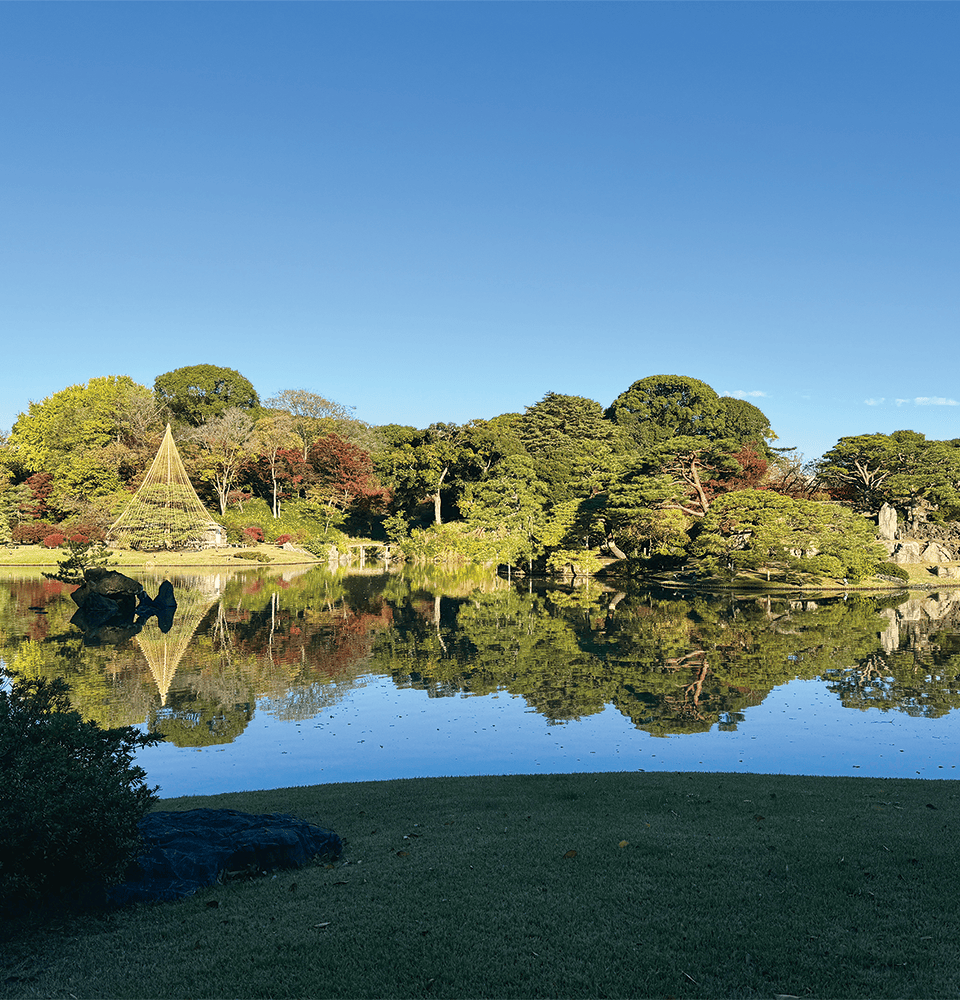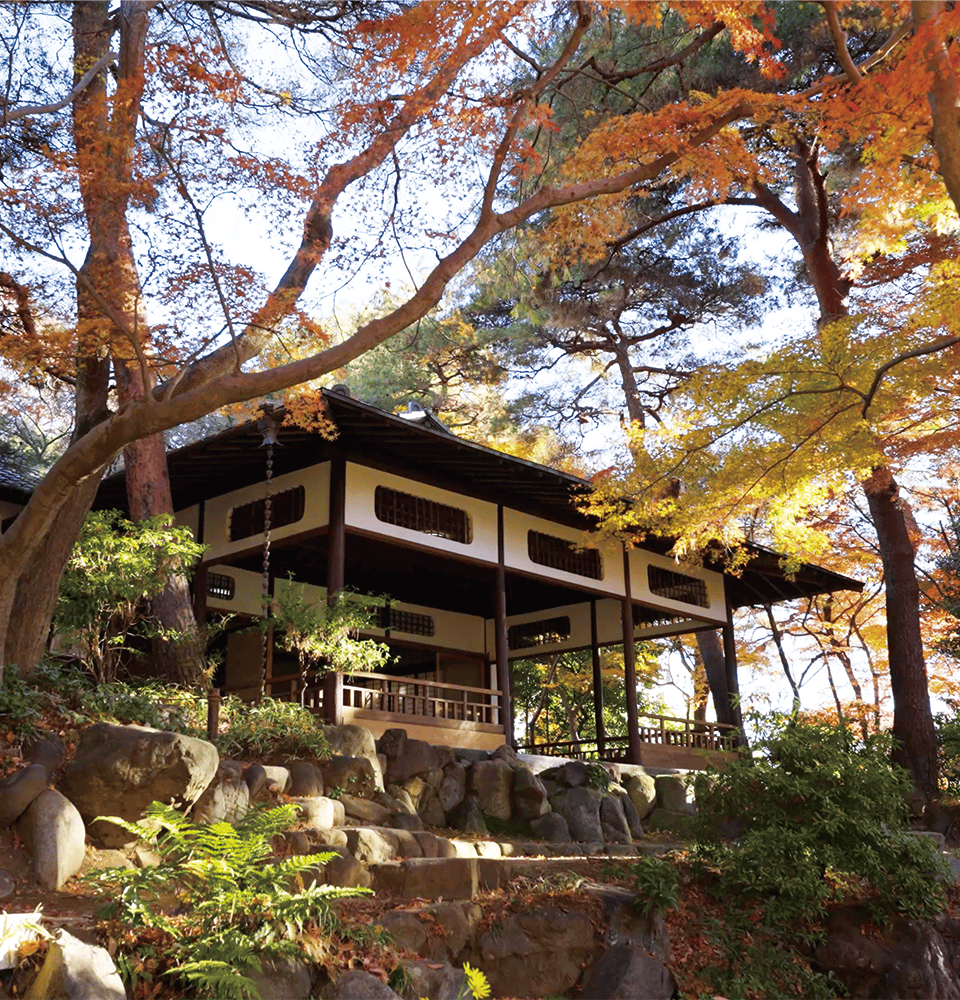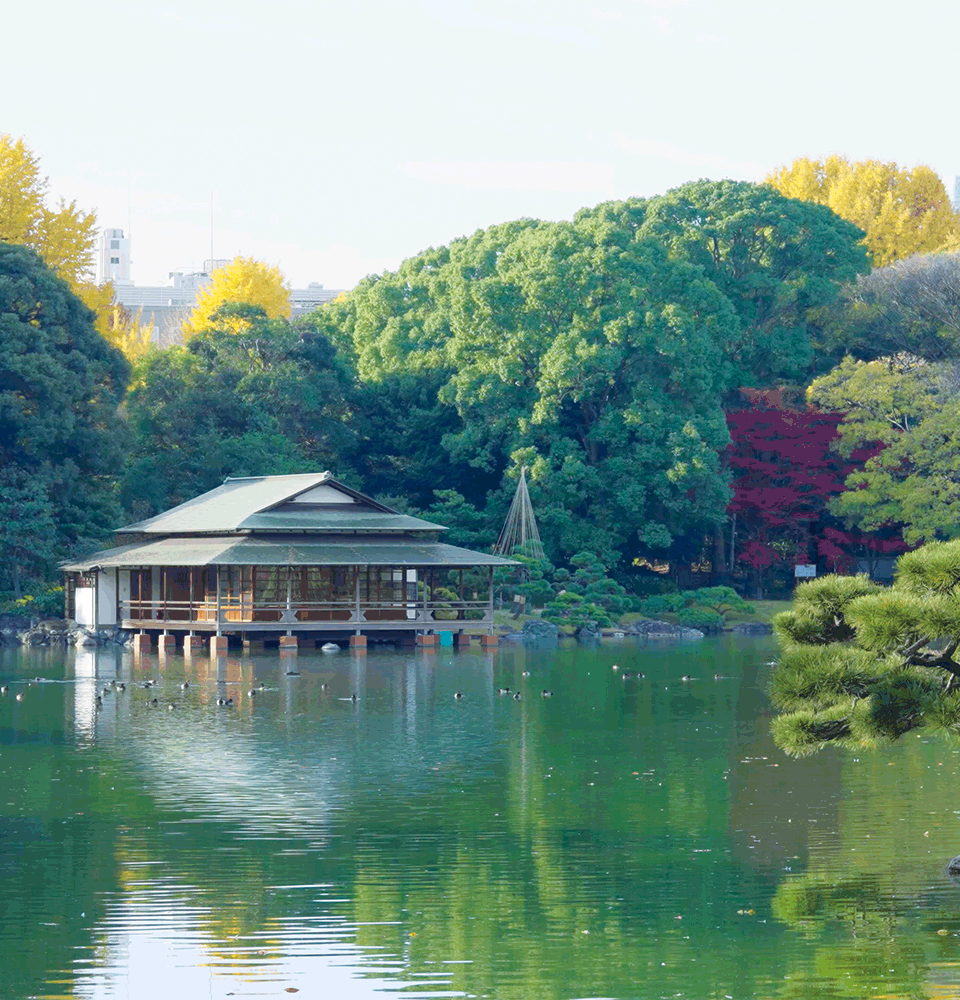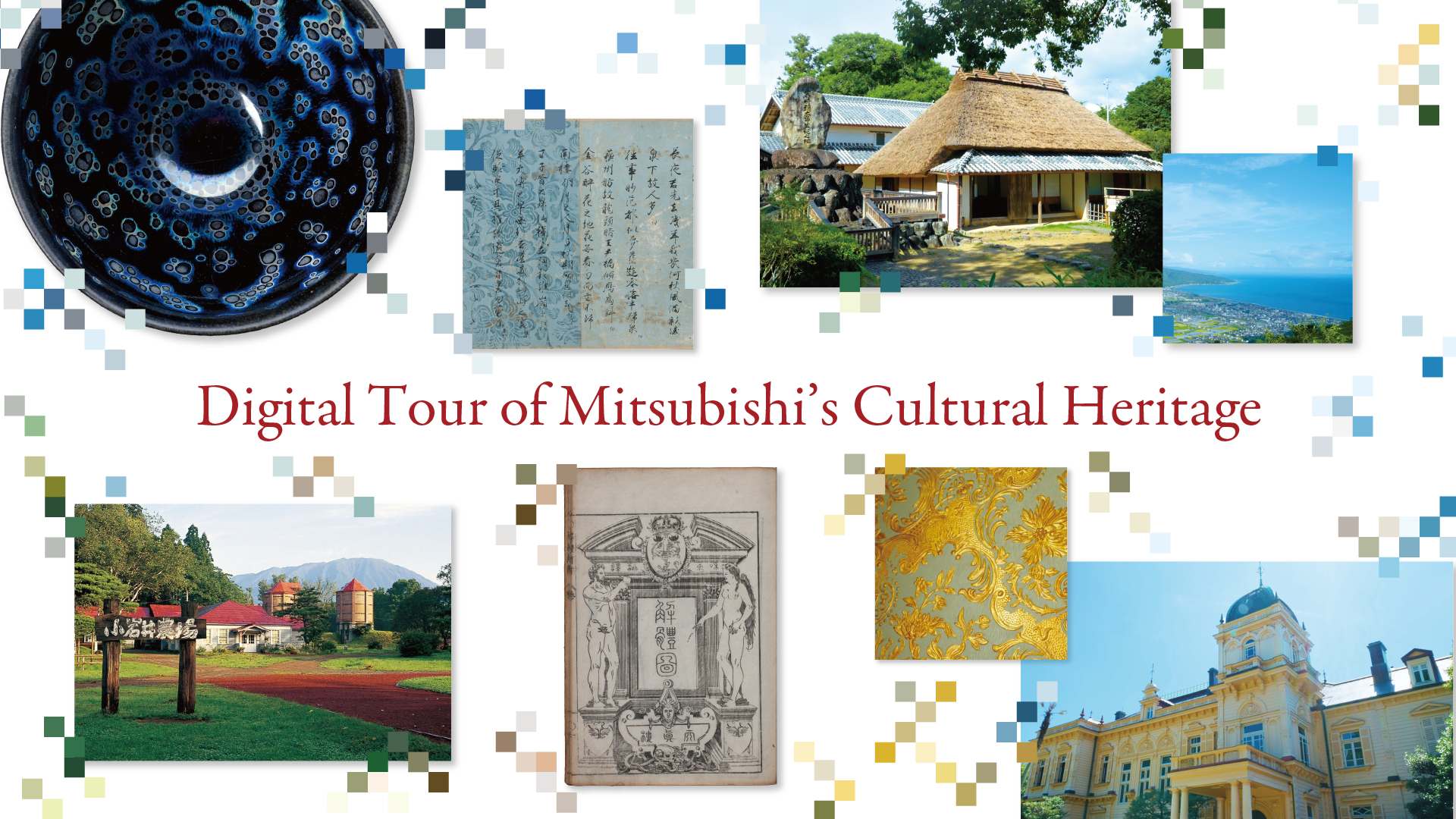
Masterpiece Gallery
Sites Associated with Mitsubishi
Garden
Ever since it was founded by Yataro Iwasaki, Mitsubishi's first president, in the late-nineteenth century, Mitsubishi has traced a path alongside Japan's economic development. Mitsubishi's long history includes support for arts and culture. Alongside its business activities, Mitsubishi has devoted itself to preserving Japanese heritage and has always incorporated the very latest art. The purpose of the Mitsubishi Center Digital Gallery is to showcase this mighty heritage to worldwide audience.
Contents
- The Birthplace of Yataro Iwasaki(1835年)
- Tosa Inari Shrine(1870年)
- Koiwai Farm(1891年)
- Kyu-Iwasaki-tei Gardens(1896年)
- Suehiro Villa Formerly of the Iwasaki Family(1926年)

The Birthplace of Yataro Iwasaki

Play Movie
The birthplace and family home of Yataro Iwasaki, the first president of Mitsubishi
In Aki, Kochi Prefecture, the house where Mitsubishi founder Yataro Iwasaki was born, raised, and where he developed his career ambition, is preserved and open to the public. Dotted around the area are many historic sites that evoke the origins of a peerless tycoon.
- Below are links to useful external sources.
The Monthly Mitsubishi runs a Japanese-language manga series about the history of Mitsubishi. The series is titled Sen Nen Kusunoki (“the millennial camphor”). Find out more by visiting the Monthly Mitsubishi website.
See Stories of Prominent Figures on the Mitsubishi website
Tosa Inari Shrine

Play Movie
Heritage of the Tosa domain and the birthplace of Mitsubishi
Osaka's Tosa Inari Shrine is located in Nishi-Nagahori, where Mitsubishi's first president, Yataro Iwasaki, founded the company's precursor, Tsukumo Shokai. The site bears witness to the historic links between Tosa Inari Shrine and Mitsubishi.
- Below are links to useful external sources.
Stories of Prominent Figures: Yataro Iwasaki timeline, vol. 09 (Yamauchi-clan residence and Tosa Inari Shrine)
Koiwai Farm

Play Movie
Living heritage of a pioneer of modern farming In the foothills of Mt. Iwate lies Koiwai Farm.
During the Meiji era (1868–1912), Hisaya Iwasaki, the third president of Mitsubishi, used the farm to pioneer modern farming methods. With its original facilities (including cattle barns) still in use today, the farm constitutes living heritage.
- Below are links to useful external sources.
See Stories of Prominent Figures on the Mitsubishi website
Koiwai Farm Official Site, History of Koiwai Farm
Kyu-Iwasaki-tei Gardens

Play Movie
Culturally valuable modern architecture of the Meiji-era
The former estate of Mitsubishi's third president, Hisaya Iwasaki, retains its authentically Western mansion and its billiard hall and Japanese-style house. The property includes many valuable features embodying architectural designs of the past.
- Below are links to useful external sources.
See Stories of Prominent Figures on the Mitsubishi website
Suehiro Villa Formerly of the Iwasaki Family

Play Movie
An estate beloved by Hisaya Iwasaki, a pioneer of modern farming methods
This site was once the estate of Hisaya Iwasaki, Mitsubishi's third president. It consists of a villa, farm, and garden. Following the example of Koiwai Farm, Hisaya used the farm to pioneer modern farming methods. When visiting the farm, he stayed at the villa. The villa was also where he spent his final days.
- Below are links to useful external sources.
See Stories of Prominent Figures on the Mitsubishi website
Contents
- Rikugien Gardens(1702年)
- Tonogayato Gardens(1934年)
- Kiyosumi Gardens(1880年)

Rikugien Gardens
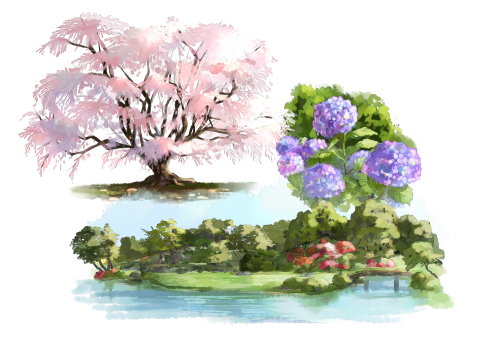
Play Movie
Leading feudal garden of the Edo period (1603 to 1868) restored and passed down by the Iwasaki Family
Rikugien Gardens feature strolling gardens with artificial hills and a pond. The gardens were designed by Yanagisawa Yoshiyasu, who was a shogunate retainer, on the land of Komagome during the Genroku era (1688 to 1704) in the Edo period. In the Meiji period (1868 to 1912), they were restored by Yanosuke Iwasaki and then donated to the City of Tokyo in the early part of the Showa period (1926 to 1989). There are many things to see here including the weeping cherry trees and the view from the artificial hills.
- Below are links to useful external sources.
Rikugien Gardens the Tokyo Metropolitan Park Association website
Tonogayato Gardens
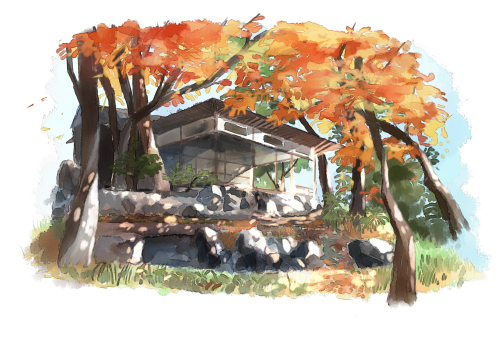
Play Movie
Garden where nature is alive in Musashino with the pond of a spring and a lush forest
Hikoyata, the grandson of Yataro Iwasaki, purchased a villa site in what is now Kokubunji City, Tokyo and created strolling gardens with forest and spring in the early part of the Showa period (1926 to 1989). These gardens skillfully utilize the nature of Musashino including the terraced cliff, lush forest and the spring water seeping out from beneath them. The Tokyo Metropolitan Government purchased the gardens in 1974 and opened them as fee-charging metropolitan gardens in 1979. The gardens were designated a national place of scenic beauty in 2011.
- Below are links to useful external sources.
Tonogayato Gardens the Tokyo Metropolitan Park Association website
Kiyosumi Gardens
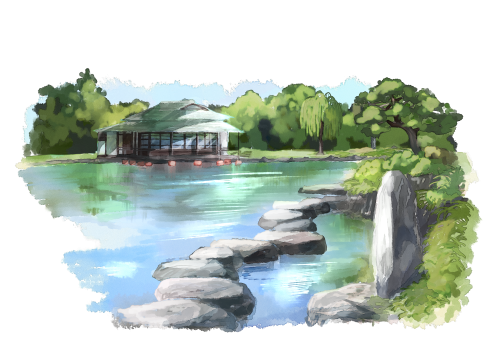
Play Movie
A scenic spot adorned with seasonal flowers featuring the exquisite stones favored by Yataro
In 1878, Yataro Iwasaki purchased land in the area of Isezaki-cho, Kiyosumi-cho, Fukagawa and developed gardens there. Even after Yataro’s death, the Iwasaki Family continued developing the gardens. The result was strolling gardens with trees and a pond. The gardens were donated to the City of Tokyo after the Great Kanto Earthquake. They were then renovated and opened to the public under the name of Kiyosumi Gardens. They are still known as a scenic spot where you can enjoy an arrangement of precious giant stones and seasonal flowers to this day.
- Below are links to useful external sources.
Kiyosumi Gardens the Tokyo Metropolitan Park Association website
Sites Related to Mitsubishi's History
About

Mitsubishi Center Digital Gallery

Mitsubishi has always engaged in cultural activities which protect the ancient culture of Japan and incorporate cutting-edge art. You can see sites and gardens associated with Mitsubishi which have been passed down throughout our history as well as masterpieces including national treasures and important cultural properties in high-definition digital images at the Mitsubishi Center Digital Gallery. Please enjoy immersive images and videos which make full use of digital technology: from the scenery of scenic spots across Japan to the details of masterpieces.
Access
Mitsubishi Ichigokan, 2-6-2 Marunouchi, Chiyoda-ku, TokyoOpening hours
10 a.m. to 6 p.m.
Closed
Every Monday (except on national holidays during the exhibition period and the final week of the exhibition period), the year-end and New Year holidays period and temporary closures







